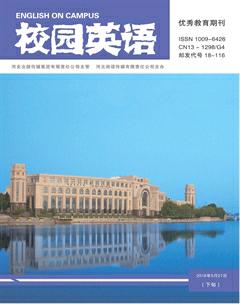Ireland and Joyce’s Novelette
刘月
【Abstract】A Portrait reflects Irelands social and spiritual circumstances at the turn of centuries and Stephen is one of the representatives who are worried about the fate of Ireland.
【Key words】Ireland; Joyce; novelette
At the end of the 19th century, Ireland was politically, economically and culturally manipulated by Great Britain, which resulted in hatred and resentment of the Irish towards the English. Therefore, national autonomy movement and Irish literature renaissance were started to seek for national independence and to oppose oppression as well. Among those movements, the one led by Charles Stewart Parnell, made the most achievement. Unfortunately, Mr. Parnell was overthrown for his marriage scandal by the conservative. Since then, Irish national movement was broken up, and whats more the civil war broke out.
What can be done under such a social circumstance? So Ireland was permeated with pessimistic moods and the incompetence of the government and the passiveness of the middle class added more. Catholicism infiltrated into every field of social life and acted as a strong reactionary force in Irelands political, social and cultural system, which made paralytic Dublin more stifling.
Joyce grew up among the mixing atmosphere o f Catholicism and nationalism. The public school little Joyce went to was in the charge of the Society of Jesus. However, the stern Catholic schooling did not achieve its expectation upon Joyce, that is, it did not turn him into a fanatical disciple of Catholicism, on the contrary, he accumulated so strong a sense of resentment towards it that he refused to confess and accept the Holy Communion at his mothers will when she was dying.
Young Joyce held respect for Mr. Parnell and that the other so-called leaders were ignorant and incompetent. So when he was a grown-up, Joyce went to exile in order to escape from the stifling Dublin. Though Joyce lived in the Continent rather than undergo the upheaval in Ireland, Dublin was always his first care.
In 1904, Joyce set out to write Stephen Hero, which was considered as the blueprint of A Portrait of the Artist as a Young Man. After several refusals, Joyce finally got a copy of A Portrait on his birthday in 1916.
What was reflected in A Portrait coincides with the real life in Ireland at that time. Ireland, religion, the family accompany the protagonists growth. In Chapter One, Stephen recollects his experiences at Clongowes to indicate his loneliness. And then he describes, at Christmas dinner, his family discuss Irelands politics and religion, which confuses and frightens him. Thus Stephen thinks of the punishment he got at school, which discloses autocracy and coldness of Catholic schools. In Chapter One, the panorama of Dublin is presented and Stephens hatred and fright towards Catholicism are implied.
In Chapter Three, Stephen is being tormented by his struggle between the sins he commits and the doctrines he learned from Catholicism. The fathers long prayer and preaching over sin and penalty as well as the hell made Stephen more frightened. The father is the embodiment of Catholicism, but he does not show Stephen what to do to release him from the spiritual bondage, only frightening him into confessing. In reality, he does not acquire the relief he expected. This implied that the stifling Catholicism does not allow free growth of a body and that it is hard to avoid religious constraints. After his confession Stephen piously prays and works hard, for which he is favored by his school that asks him to receive the Holy occupation—the father--as his life career. In fact, Stephen does not have an idea about what he will do when he works hard for the Society of Jesus is characteristic of no desires, faithfulness and mirthless work while he longs for expressing himself in some mode of life or art as freely as he can and as wholly as he can. He is seized by pain sense of loss. He wanders about, on the seashore, Stephen gets epiphany—he hears the call of life when he sees the waded girl and makes up his mind to reject the appeal of God and to seek ideal and career in artistic writing. So Stephen (Joyce) leaves his country, religion and family which tie him up for France, using “silence, exile, and cunning” to forge a conscience that his nation has not created yet. Stephen (Joyce), as a young artist goes to exile who holds the same purpose that of Irish Literature Renaissance to which he does not belong with W. B. Yeats as the leading figure: to improve and prosper the national spirit in Ireland through reviving and spreading Irish literature. History helps to create A Portrait and A Portrait helps to reflect history.
References:
[1]Joyce,James.A Portrait of the Artist as a Young Man,Penguin Books,1984.
[2]Poupard,Dennis and James E.Person Jr.,Twentieth—Century Literary Criticism(vols 3,8,16),Michigan:Gale Research Company,1985.
[3]侯维瑞.现代英国小说史[M].上海外语教育出版社,1985.
[4]吴元迈.外国文学评论.1999,(1).

